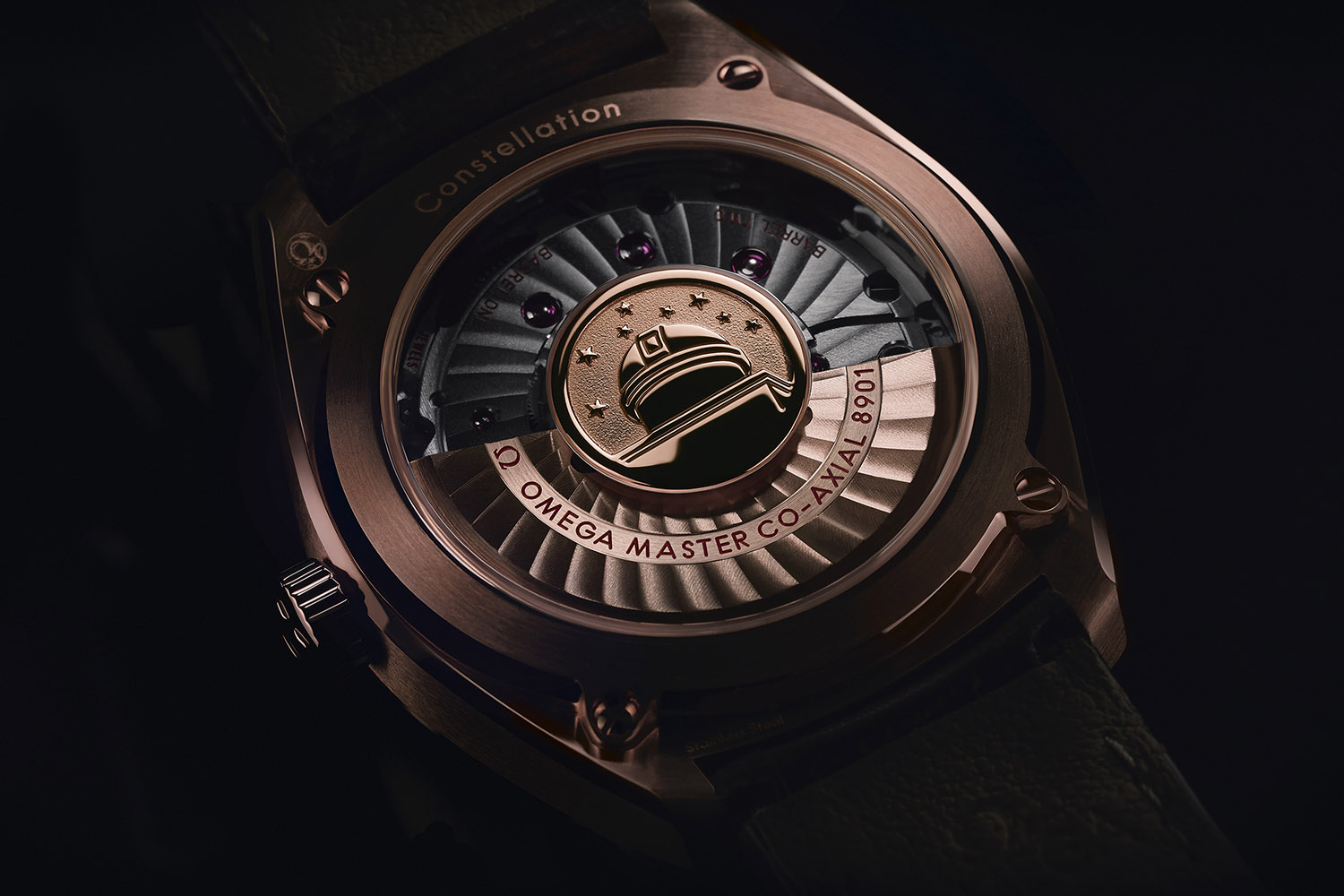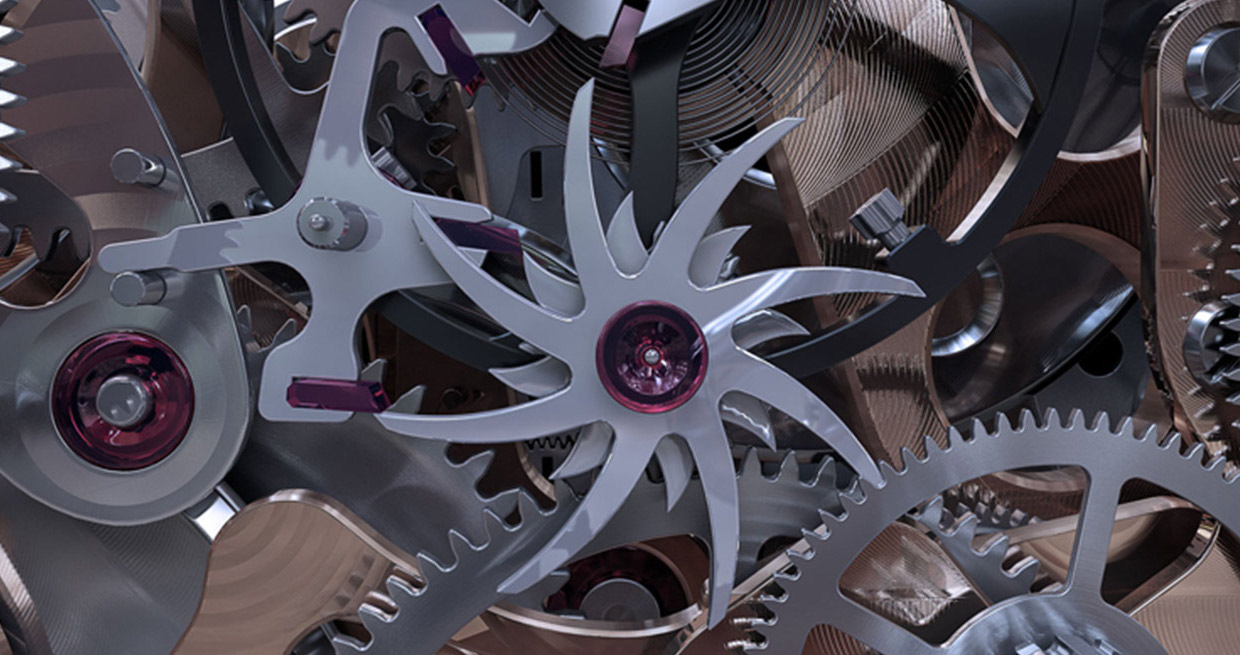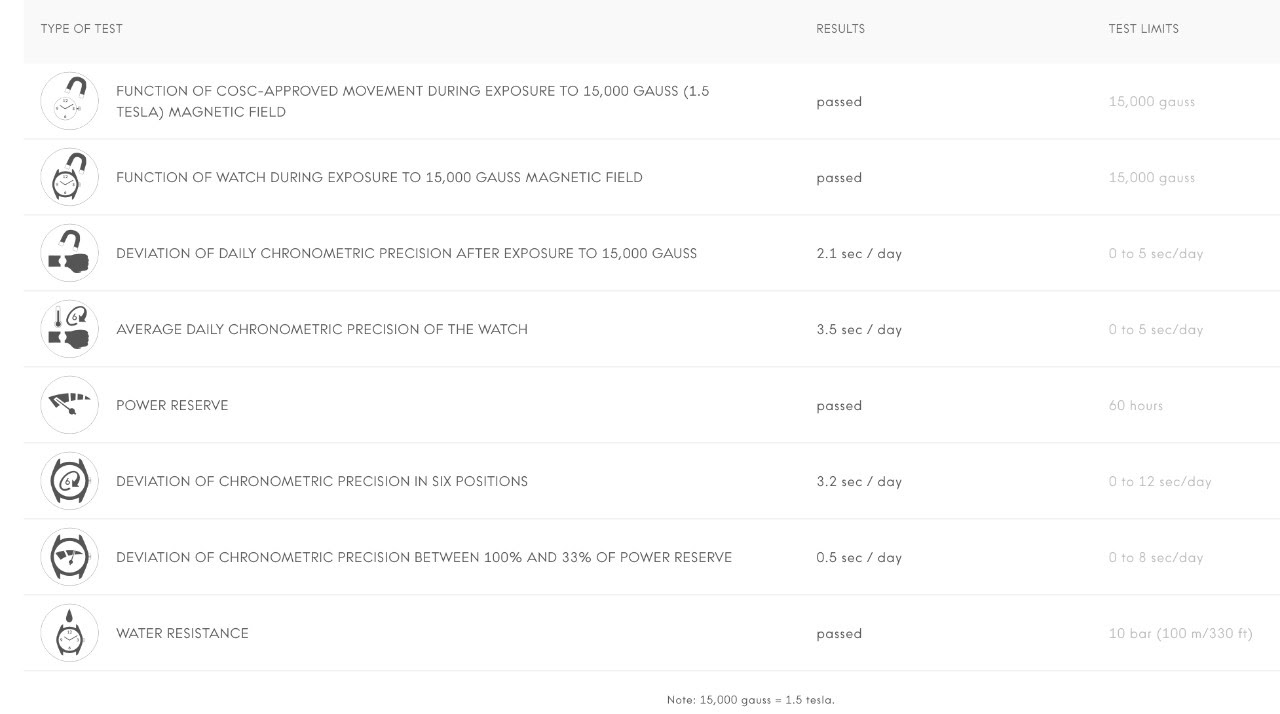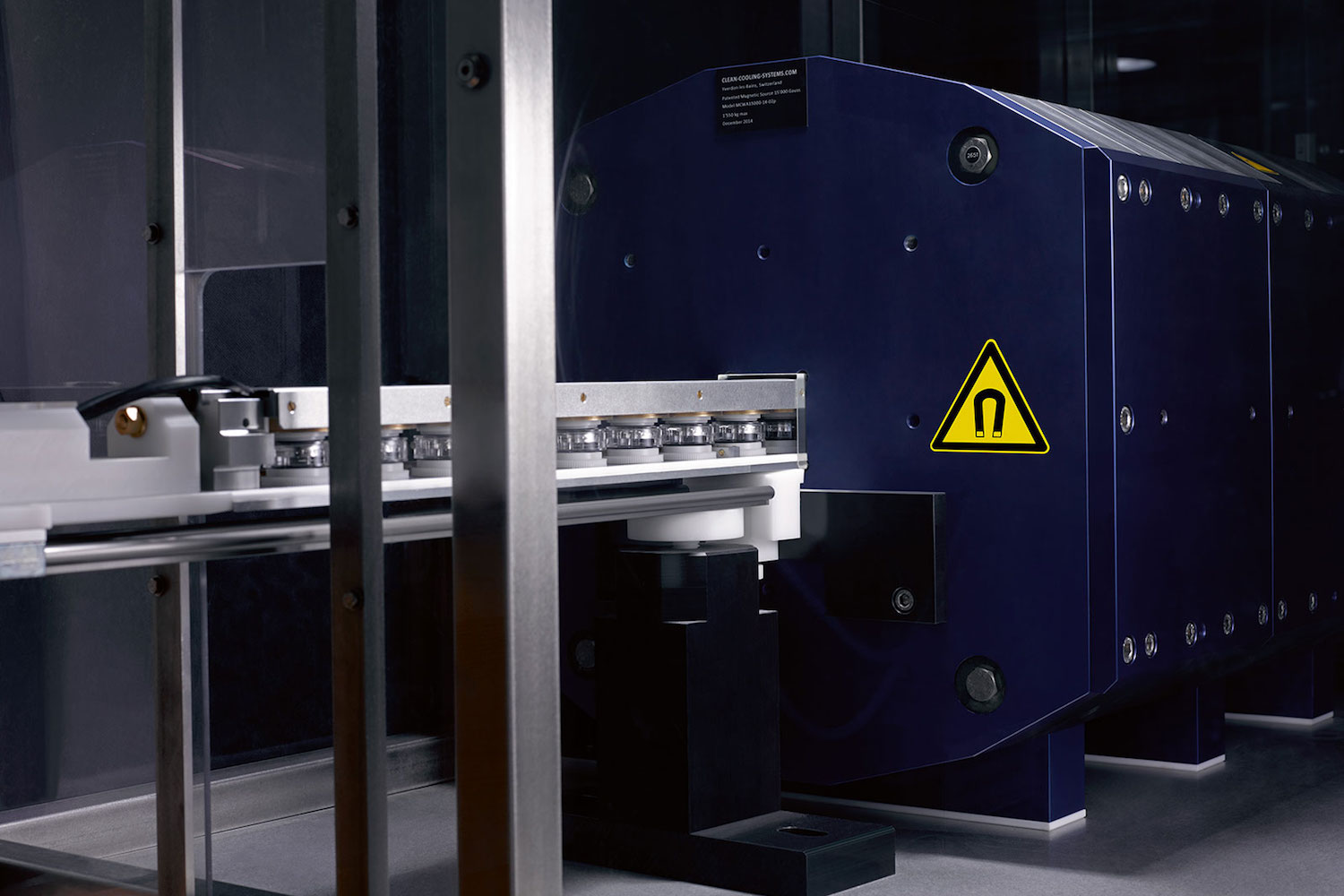VIDEO – Going Where No Camera Has Gone Before – Our Documentary About The Omega Master Chronometer Certification
The Omega Master Chronometer is about the pursuit of the best possible movement. Not the most complex movement, not the one with the most features, or the craziest complications. No. With the Master Chronometer, Omega wanted to create a standard movement that will perform to the same high level in every situation, in every environment, in every possible condition. Heat, cold, magnetic fields, shocks… Everything you can imagine has been tested, ensuring precision, reliability and efficiency, everyday and everywhere. Believe it or not, this is a really big deal, more significant even than any tourbillon. Not only has Omega spent years on research and development, it has also created an entirely new way to certify these watches. Today, we bring you where no camera has ever been before; inside the Omega Master Chronometer Certification facilities.
We wanted to understand why Omega decided to create the Master Chronometer movement and the certification process that goes along with it. We also wanted to see first-hand, step by step, how the Omega Master Chronometer watches are tested and certified, what procedures are followed and of course what the final outcomes are. So, we asked Andreas Hobmeier, Omega Vice-President Procurement and Production (or in more simple terms, the head of production at Omega Watches) to take us on a tour, explaining all the details along the way, and of course we took our cameras with us. Well, as it turns out, the process of the certification is so involved and complex, that we ended up with a TV-style documentary.
About the Omega Master Chronometer
Why has Omega developed a brand new type of Chronometer, different from the usual COSC certification? Well, the COSC certifies movements (not watches) for precision, in 5 positions and at several temperatures, guaranteeing the good running of the watch over the length of its power reserve. In order to pass, movements have to run within a -4s / +6s per day deviation. Yet, there are many aspects COSC does not take in consideration. Firstly, it tests movements and not watches, meaning that variations can appear once the movement is cased up. The main other drawback is that COSC does not take into account one of the main issues of our current lives; magnetic fields.
Magnetic fields are one of the biggest challenges facing today’s mechanical watches. Increasingly, watch owners are needing to send their watches into service centers for demagnification. It’s not a complex issue to fix but it but it is time consuming and annoying for the owner, plus it’s always better to avoid if possible. Tablets, mobile phones, microwave ovens, induction cooking plates and even airport security checks can affect a watch’s accuracy, even expensive ones, thanks to the magnetic fields they use. When you look at how many devices are using magnetic fields these day, it’s not hard to imagine that the magnetization of a watch can easily occur, just by daily use. Avoiding this issue was crucial for Omega.
While anti-magnetic watches have been around for several decades, the traditional idea has always been to protect the movement by placing a heavy, and space-consuming, faraday cage around it. This results in several drawbacks: larger watches, heavier cases, no possibility of a date window, and no way to display the movement through the caseback. Omega’s idea was to make the movement (and not the watch) anti-magnetic. The first important step toward creating an anti-magnetic movement began in 2008, with the launch of the Si14 silicon balance spring. Yet, this was not enough. To have the entire movement anti-magnetic, Omega had to go further. The staffs and pivots in these upgraded calibres are made of Nivagauss; the steel plates found in the Co-Axial movement have been replaced with non-magnetic plates; and the spring of the shock absorber has been crafted from an amorphous material. That means that all parts that should usually steer clear of magnetism, have been replaced with anti-magnetic materials.
Alongside the research on magnetism, Omega also relies on all its other innovations from the past few years, the main one being of course the Co-Axial escapement, which is now deployed on all the movements of the brand (with the exception of the calibre 1861 in the Speedmaster). This specific type of escapement has nothing to do with the anti-magnetic properties strictly speaking, yet it is extremely important to the overall accuracy of the watch, which is of course one of the main aspects of the chronometer certification created by Omega, the “Master Chronometer”.
The Omega Master Chronometer movements will now be chronometer certified but also certified against magnetic fields up to 15,000 Gauss (which corresponds to what you’ll find in a MRI and a value that is 15 times more than what a certain competitor, protected against 1,000 Gauss, can do with a faraday cage). This concept was first explored with the Omega De Ville Trésor, the Seamaster 300 Master Co-Axial (the name of which later changed) and the Seamaster Aqua Terra Master Co-Axial. Once the certification process was defined, the nomenclature changed to Omega Master Chronometer, a concept launched officially in the Omega Globemaster, the first Master Chronometer in the world.
About the Omega Master Chronometer Certification (and METAS)
Having created these new types of movements, with their antimagnetic properties, Omega had to find a new way to test and certify them. They had to go further than standard COSC certification, something that has been done with the Omega Master Chronometer Certification, with rules established together with METAS, the Swiss Federal Institute of Metrology.
It’s important to note that “Master Chronometer” is trademarked by METAS, not by Omega. Although there were some intense discussions about this, Omega and the Swatch Group recognized the importance of making this certification available to other companies. It means that other brands can use this same certification process for their watches. Still, the big question is: who else can build movements and watches of the same precision and anti-magnetic capability as Omega in the near future? Probably no one, considering the immense amount of research and development required. As of now, Omega is the exclusive user of the Master Chronometer Certification, and, in our humble opinion, this will likely be the case for a few more years.
Just to be clear though, METAS is not certifying the watches. They simply defined the rules to obtain the certification and the procedures that must be followed. As you can see in the video, the testing procedures are undertaken internally by Omega, under supervision by METAS employees (who have their own, independent office inside the testing facilities). Machines are tested and calibrated by METAS. A METAS analyst is on-site at all times and monitors the process for abnormalities and deviations. He/she does that via statistical analysis of all the manufacturer’s results. The analyst also does random sampling and re-tests.
Yet, COSC has not been cut out of the Omega Master Chronometer Certification process either. Although there had been some internal debate about the value of keeping COSC certification in the process, it was decided not to abandon the COSC certification. Thus, Omega movements are still certified as chronometers by COSC and receive their official chronometer leaflet.
What about the Omega Master Chronometer Certification Process?
1. AVERAGE DAILY PRECISION OF THE WATCH
This test runs over 4 days and checks the daily precision of the watch in real life wearing conditions. The watch is initially placed in six different positions and two alternating temperatures, then exposed to magnetism of 15,000 gauss, then demagnetized, then finally checked again in the same differing positions and temperatures. For each step, a photograph is taken of the watch and checked 24 hours later for accuracy against UTC time.
2. FUNCTION OF COSC-APPROVED MOVEMENT DURING EXPOSURE TO 15,000 GAUSS MAGNETIC FIELD
This test examines the movement of the watch only, placing it in two different positions, and subjecting it to a magnetic force of 15,000 gauss. During a time of 30 seconds in each position, the functioning of the movement is audibly checked using a microphone.
3. FUNCTION OF WATCH DURING EXPOSURE TO 15,000 GAUSS MAGNETIC FIELD
This test is similar to the second. In this step however, instead of just the movement being tested, the entire watch is subjected to magnetic fields of 15,000 gauss, with the functioning being checked by way of audio. In today’s modern world, magnetism is all around us, in places such as tablets, phones, hairdryers and even the metallic clasps of women’s handbags. Mechanical watches without anti-magnetic innovation can suffer long-term effects on their accuracy when exposed to these magnetic fields.
4. DEVIATION OF DAILY PRECISION AFTER EXPOSURE TO 15,000 GAUSS MAGNETIC FIELD
This test works out the average deviation of the watch between day 2 and 3 of the first test. The result shows the daily precision of the watch before and after exposure to a magnetic field of 15,000 gauss.
5. WATER RESISTANCE
This test submerges the watch underwater, gradually applying more pressure up the point of the stated water resistance. For certain watches, it also goes beyond. This ensures that each watch is properly tested for underwater conditions.
6. POWER RESERVE
This test checks the power reserve of the watch by taking pictures at the beginning and end of the expected limit. Checking any deviation again, this proves that each watch functions accurately for its stated time. For wearers, it’s valuable to know that, even after a weekend on the bedside table, your watch will still be performing well.
7. DEVIATION OF RATE BETWEEN 100% AND 33% OF POWER RESERVE
This test puts the watch in six different positions, similar to each side of a dice. With the watch at full power, the watch spends 30 seconds in each position, with average precision recorded by way of audio . The power reserve is then reduced by two thirds and checked again, to ensure that precision is kept even when the watch is not at full power.
8. DEVIATION OF RATE IN SIX POSITIONS
This test is similar to the previous test, and checks for any deviation in the running time when the watch is placed in six different positions, similar again to each side of a dice. With 30 seconds in each position, the results are recorded through audio. By placing a watch in different positions, we can ensure a watch’s performance no matter what the wearer is doing, whether it’s sitting at a desk or actively playing sport.
Filmed and Edited by Julien Couson, PMG Productions for Monochrome-Watches. Sound mixed by Damien Raynaud, PMG Productions. All rights reserved to Monochrome-Watches, 2017.














9 responses
wow, Omega is setting the bar super high!
Are both models Seamaster 300 & Speedmaster Moonwatch (Cal 1861 non anti-magnetic) gone thru the same test?
I wonder how many other brands will submit their watches for testing and the cost involved. Odd that even with this certification Omega does not give a 5 year warranty for the Master Chronometers like Rolex does for their Superlative designation.
Do you now what the unbranded watch shown 20.16 min into the video is ??
It is a sample watch from ETA, unbranded of course, just for the tests.
Thank you very much.
Wow, awesome, thanks for this article/video! As a watch-nerd-engineer I would love to develop testing systems for them …
Thank you! Very informative and wonderfully done!! Kudos to Frank et al!!
Thanks Terry and Eugene, and you’re very welcome, Peter